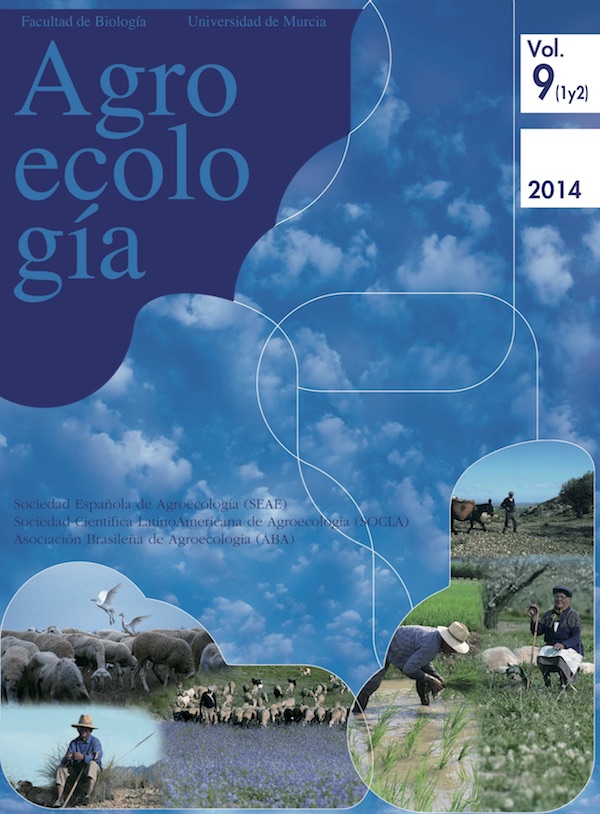Production and release of lacewing-eggs in organic olive crops in la Rioja, Argentina
Abstract
The province of La Rioja, has the largest area of land (30 000 has) with olive crop in Argentina and the main biological controls are lacewings. The adults of the specie Chrysoperla argentina González Olazo & Reguilón, were obtained from breeding CENIIT Laboratory and in field. Several observations and preliminary tests allowed to determine a protocol for production and release of eggs. A couple of lacewing in glassA of 8.5ø x 5cm, with green paper affixed to the inside of the lid, and food: water, wet diet: water-carob-honey-yeast-pollen (1:1:1:2) and dry diet; yeast-pollen-carob flour (1:1:1). Ten repetitions were made. In 29 days there was a total of 5 944 eggs. The average daily production in the 10 glassA,was 204.97 eggs.The fold-change was performed daily, in a mesh cageB. The lid with pedunculate eggs were tied among the branches of the olive tree, preferably in the area NW of the tree. After 10 days the lid were collected and checked for normal emergence of the larvae I, in 95% of the eggs.
Downloads
Las obras que se publican en esta revista están sujetas a los siguientes términos:
1. El Servicio de Publicaciones de la Universidad de Murcia (la editorial) conserva los derechos patrimoniales (copyright) de las obras publicadas, y favorece y permite la reutilización de las mismas bajo la licencia de uso indicada en el punto 2.
2. Las obras se publican en la edición electrónica de la revista bajo una licencia Creative Commons Reconocimiento-NoComercial-SinObraDerivada 3.0 España (texto legal). Se pueden copiar, usar, difundir, transmitir y exponer públicamente, siempre que: i) se cite la autoría y la fuente original de su publicación (revista, editorial y URL de la obra); ii) no se usen para fines comerciales; iii) se mencione la existencia y especificaciones de esta licencia de uso.
3. Condiciones de auto-archivo. Se permite y se anima a los autores a difundir electrónicamente las versiones pre-print (versión antes de ser evaluada) y/o post-print (versión evaluada y aceptada para su publicación) de sus obras antes de su publicación, ya que favorece su circulación y difusión más temprana y con ello un posible aumento en su citación y alcance entre la comunidad académica. Color RoMEO: verde.





